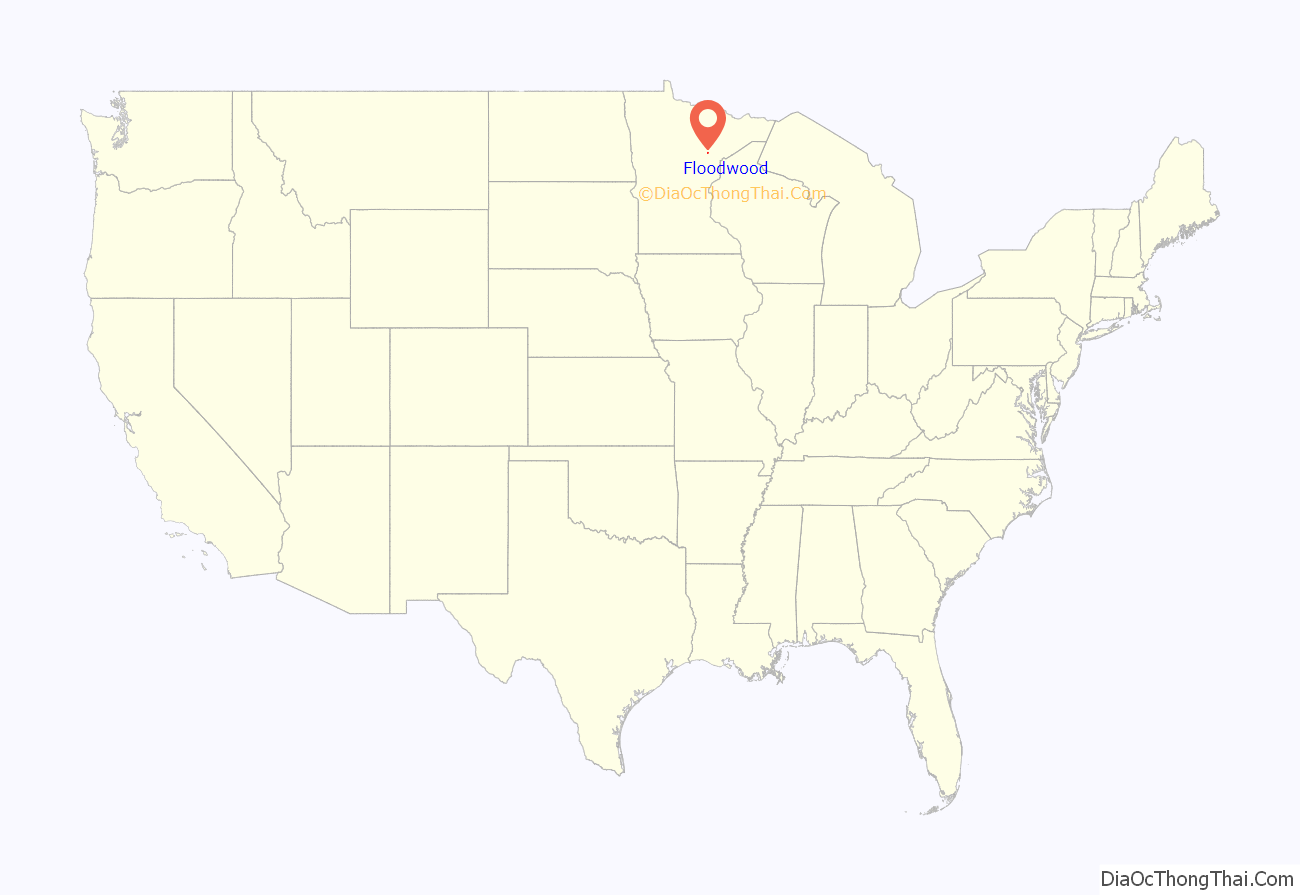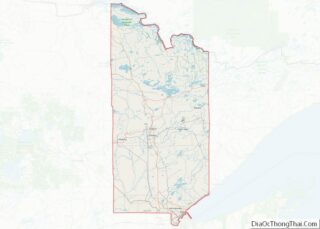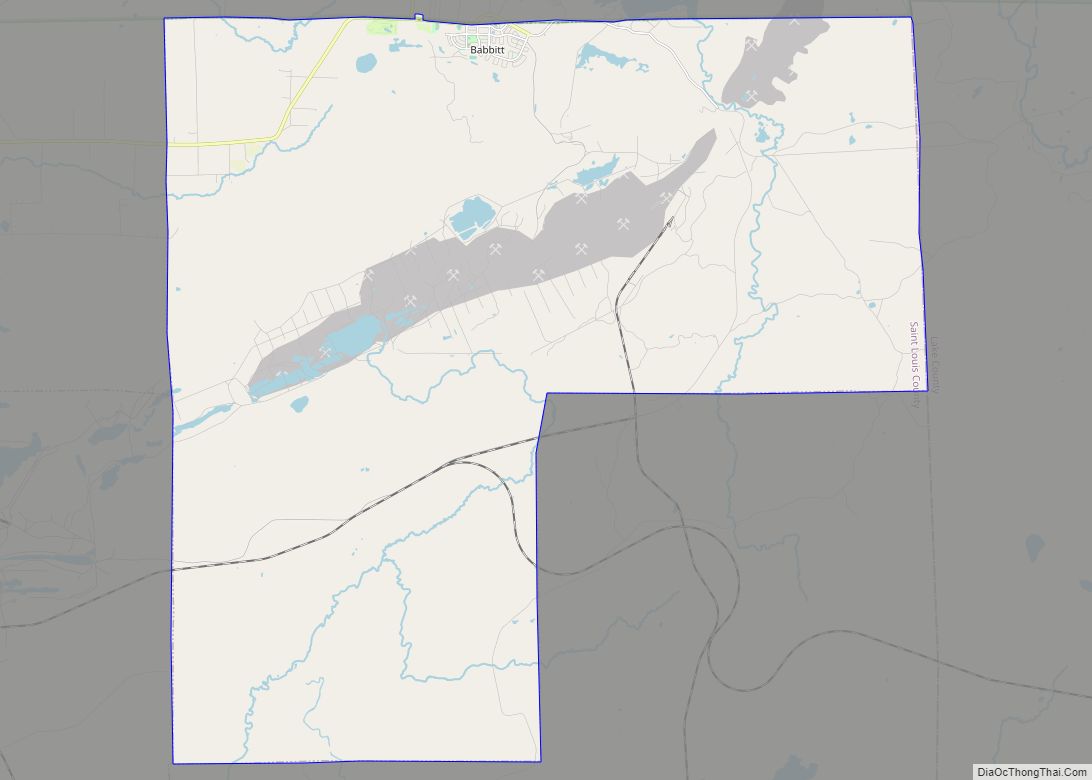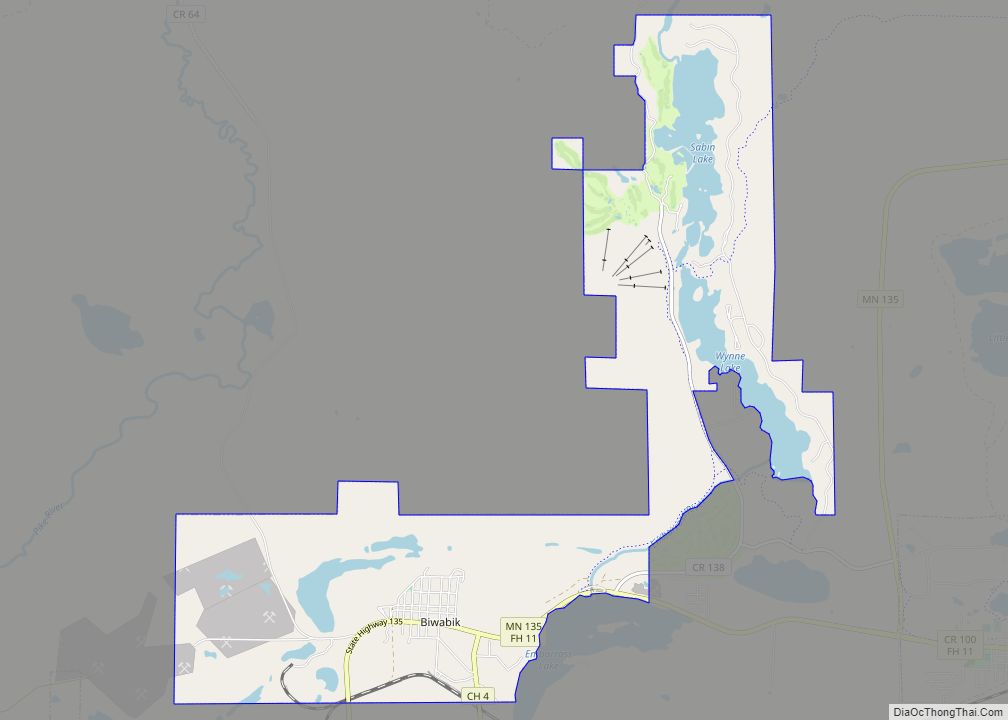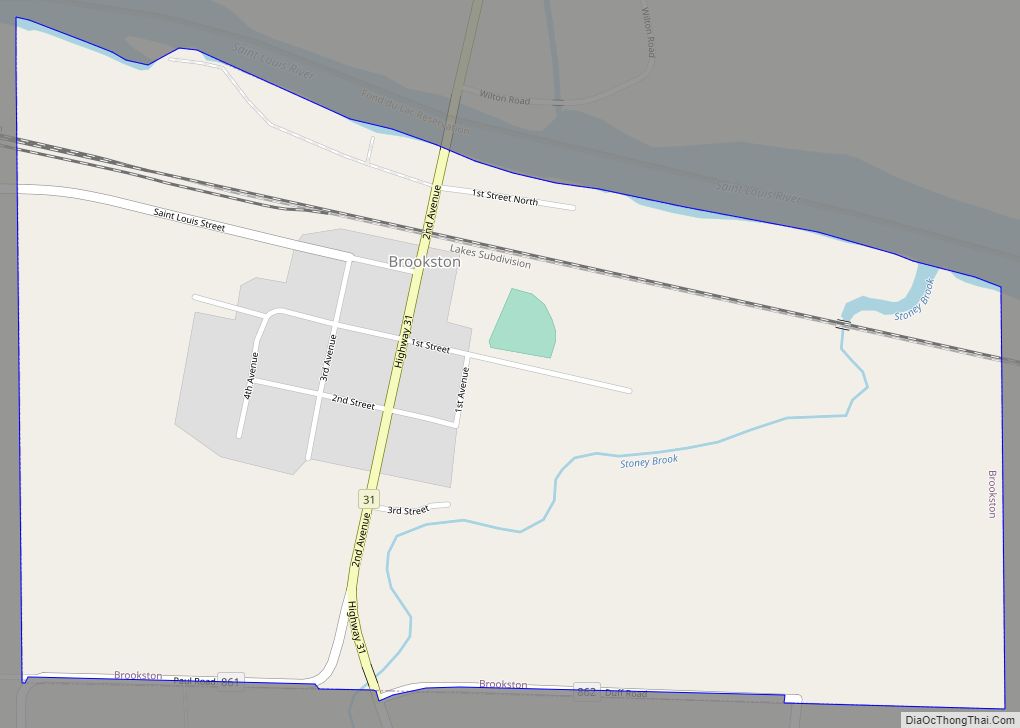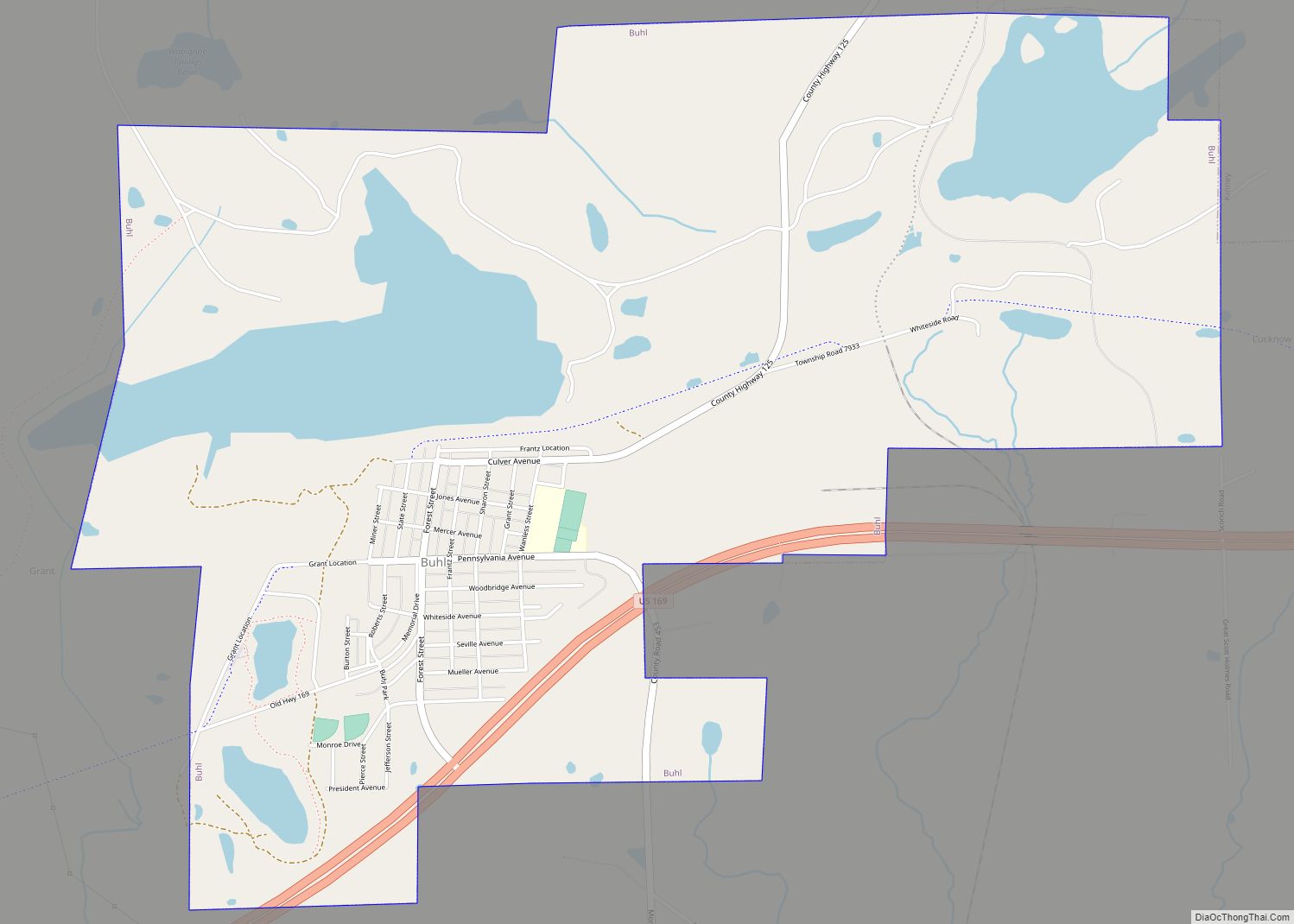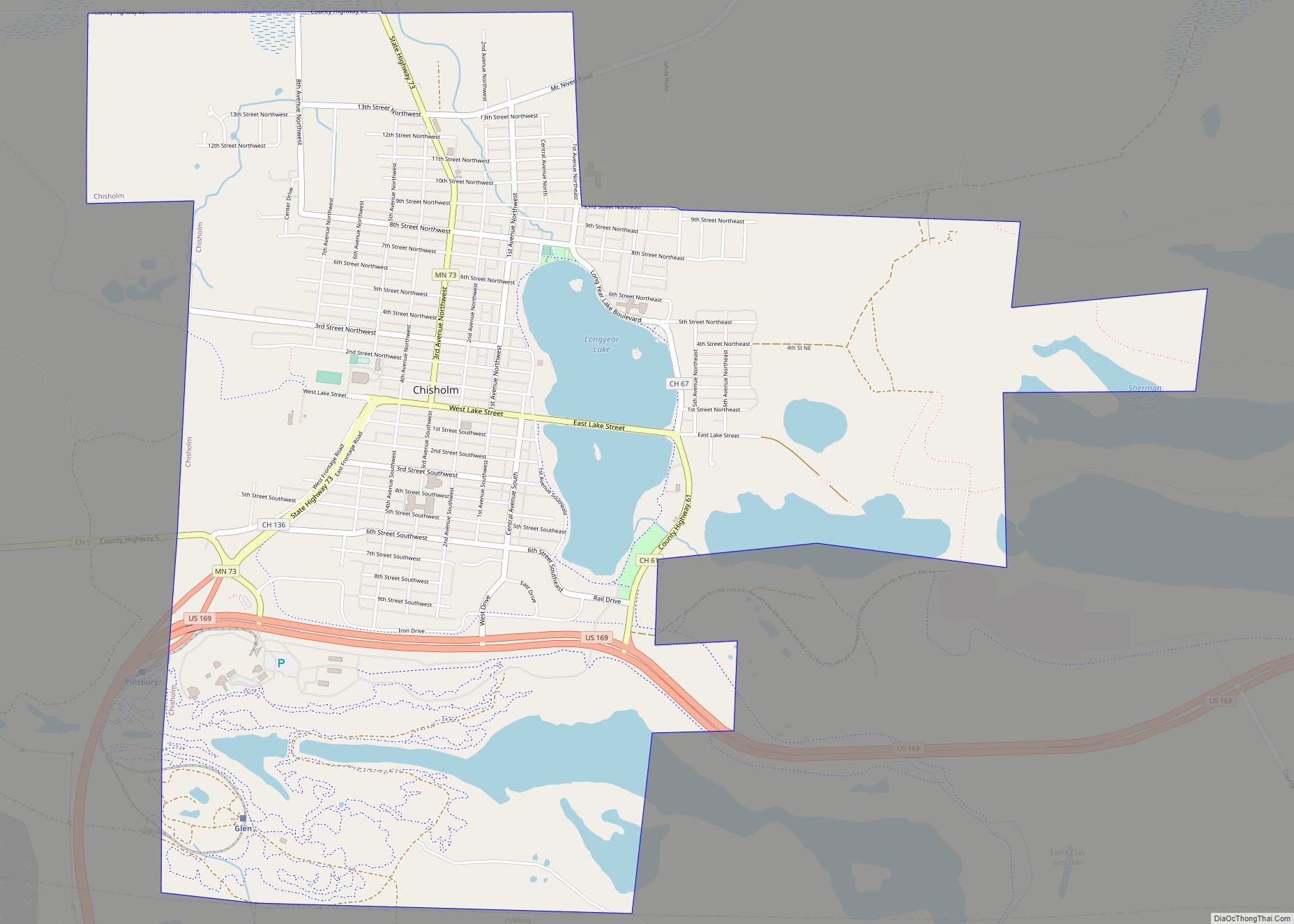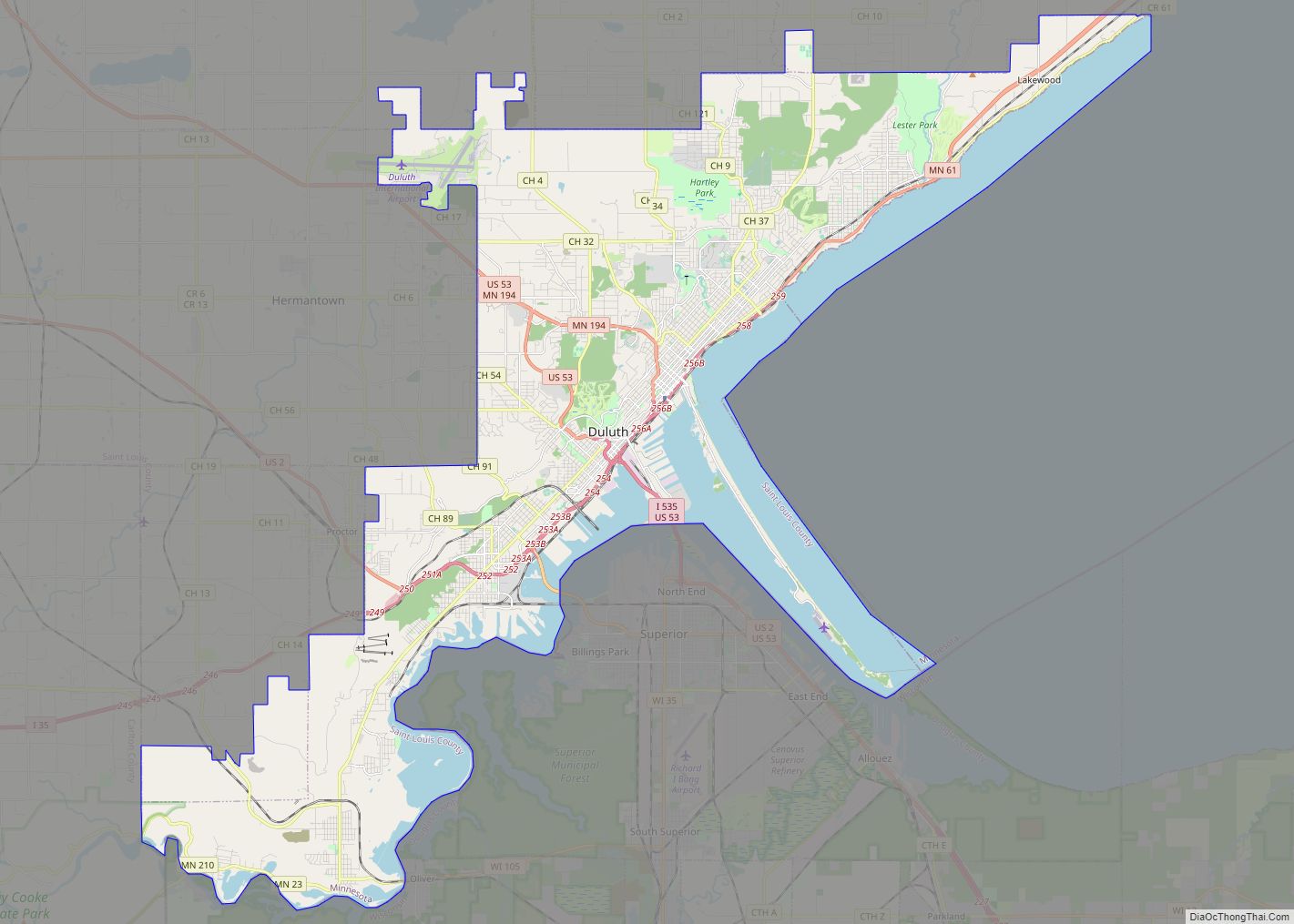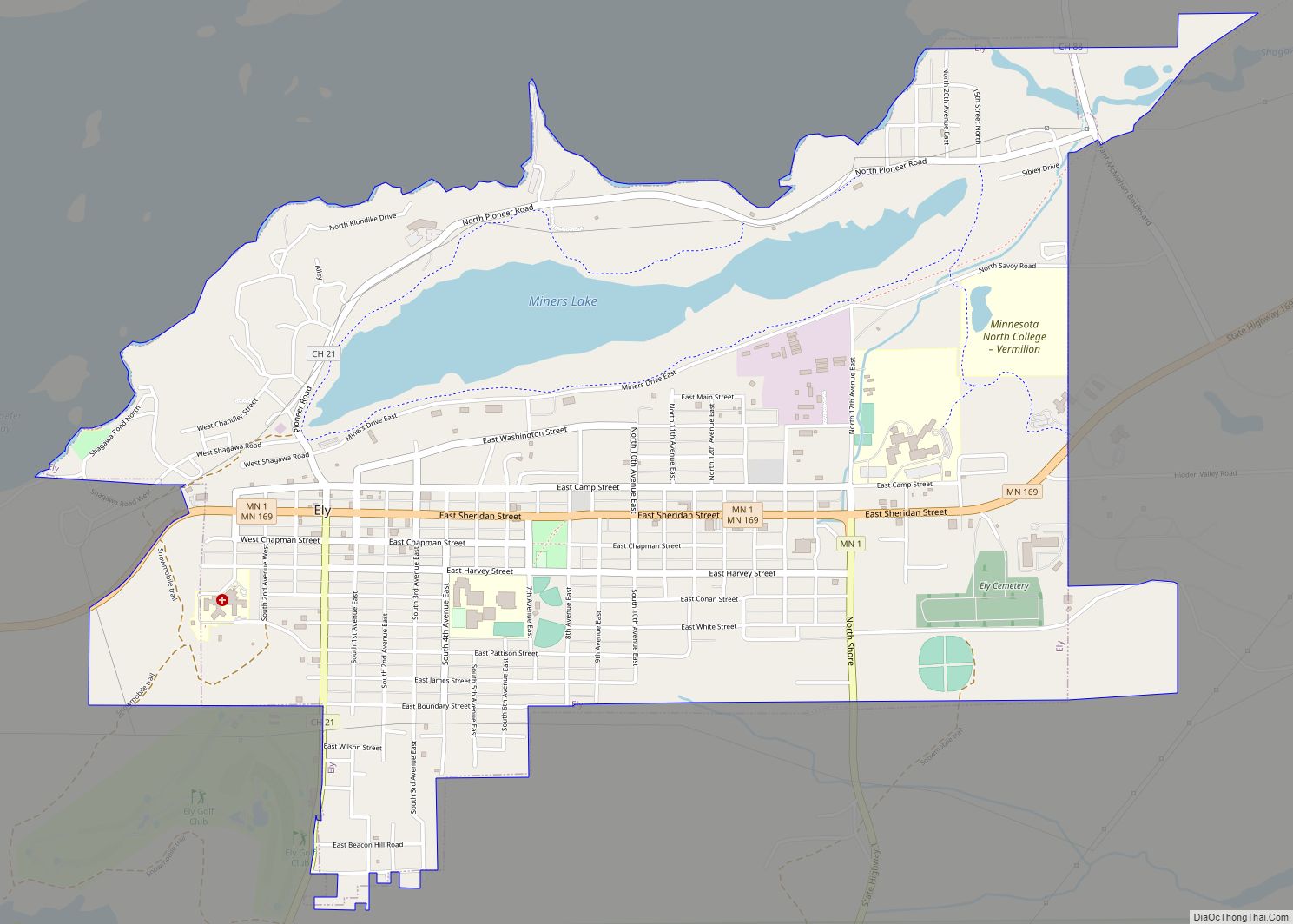Floodwood is a city in Saint Louis County, Minnesota, United States. The population was 528 at the 2010 census.
Originally a logging community, Floodwood was a dairy community for most of its history, but could now be best described as a bedroom community, since most of its working population finds employment in nearby Duluth, Grand Rapids, Hibbing and Cloquet. The city calls itself “The Catfish Capital of the World”, a nickname it gave itself following the introduction of its annual Catfish Days festival.
U.S. Highway 2 and State Highway 73 (MN 73) are two of the main routes in Floodwood.
| Name: | Floodwood city |
|---|---|
| LSAD Code: | 25 |
| LSAD Description: | city (suffix) |
| State: | Minnesota |
| County: | St. Louis County |
| Incorporated: | 1899 |
| Elevation: | 1,250 ft (380 m) |
| Total Area: | 1.51 sq mi (3.91 km²) |
| Land Area: | 1.51 sq mi (3.91 km²) |
| Water Area: | 0.00 sq mi (0.00 km²) |
| Total Population: | 517 |
| Population Density: | 342.38/sq mi (132.18/km²) |
| ZIP code: | 55736 |
| Area code: | 218 |
| FIPS code: | 2721338 |
| GNISfeature ID: | 0661287 |
| Website: | floodwood.govoffice.com |
Online Interactive Map
Click on ![]() to view map in "full screen" mode.
to view map in "full screen" mode.
Floodwood location map. Where is Floodwood city?
History
Long before the city of Floodwood existed, the intersection of the East Savanna River with the Saint Louis River made what later became Floodwood a strategic economic location. The Savanna Portage was a major route for transportation in the southern Arrowhead, but its importance was magnified greatly with the arrival of European fur traders, who used the route to access rich resources of beaver and other fur animals in the upper Mississippi valley. As early as 1679, Europeans were passing by the modern location of Floodwood as they turned from the Saint Louis River to the East Savanna River on their way to the portage.
It was not until the late 19th century that homesteads began to appear in the area. In 1889, it was announced that a railroad would pass through the area. This led to a local population boom in anticipation of the opportunities the railroad would bring. In 1890, J. C. Campbell began large-scale logging operations in the area, and the C. N. Nelson Lumber Company of Cloquet built a logging railroad in the area (the logging railroad operated only in the winter; in the summer, the logging operations used the Saint Louis River to transport timber to mills in Cloquet).
In 1893, the year that local government was first organized, the first Floodwood School building was constructed of logs. The next year, the Nelson Company was purchased by what six years later became the Weyerhaeuser Timber Company, continuing the intensification of logging activities in the area. The community continued to grow and was finally incorporated in 1899.
By the time the 1900 United States Census was conducted, Floodwood had a population of 224, which, within the next 10 years, more than doubled to 481. In 1911, the Floodwood School, which had previously been a county school, became Independent School District No. 19 (after 1958, Independent School District 698), and a new six-room brick building was built for it. The community continued to grow until the 1918 Cloquet Fire nearly ended the city’s history.
Like most of its neighbors, Floodwood survived the fire and began a slow recovery. But the practical importance of the rivers, Floodwood’s greatest economic resource, ended. By 1926, the era of large-scale timber operations in the area had come to a close. With the logging operations gone, Floodwood’s survival was again in peril.
The solution had already been present since 1911: as the surrounding areas had pastures suitable for supporting dairy cattle, the community’s economy turned to dairy production. In 1911, the Floodwood Creamery Cooperative was organized. The creamery became the main support of the local economy, selling dairy products across the world until it closed in the late 1960s. Dairy cattle are still a major part of the local economy.
The 1970 census showed, for the first time since 1920, that Floodwood’s population had decreased. This began a trend that has endured to the present: the last time a census showed an increase in Floodwood’s population was in 1960.
Floodwood Road Map
Floodwood city Satellite Map
Geography
According to the United States Census Bureau, the city has an area of 1.42 square miles (3.68 km), all land.
Floodwood sits at the junction of U.S. Highway 2 and Minnesota State Highway 73. It is roughly halfway between Duluth and Grand Rapids along U.S. Highway 2 and roughly halfway between Hibbing and Moose Lake along State Highway 73. Also nearby is the city of Cloquet.
Floodwood is 46 miles (74 km) northwest of Duluth and 37 miles (60 km) southeast of Grand Rapids. It is 33 miles (53 km) northwest of Cloquet and 40 miles (64 km) south of Hibbing.
The city sits at the junctions of the Floodwood River and the East Savanna River with the Saint Louis River. The area surrounding the city largely comprises forests, wetlands and, where conditions permit, dairy farms. Nearby peat bogs employ many people from Floodwood, Meadowlands and other communities in southwest Saint Louis County. Protected areas near Floodwood include Savanna Portage State Park, the Savanna State Forest, and the Floodwood Game Reserve. The Savanna Portage, together with the three rivers that meet in the city, contributes much to local culture.
See also
Map of Minnesota State and its subdivision:- Aitkin
- Anoka
- Becker
- Beltrami
- Benton
- Big Stone
- Blue Earth
- Brown
- Carlton
- Carver
- Cass
- Chippewa
- Chisago
- Clay
- Clearwater
- Cook
- Cottonwood
- Crow Wing
- Dakota
- Dodge
- Douglas
- Faribault
- Fillmore
- Freeborn
- Goodhue
- Grant
- Hennepin
- Houston
- Hubbard
- Isanti
- Itasca
- Jackson
- Kanabec
- Kandiyohi
- Kittson
- Koochiching
- Lac qui Parle
- Lake
- Lake of the Woods
- Lake Superior
- Le Sueur
- Lincoln
- Lyon
- Mahnomen
- Marshall
- Martin
- McLeod
- Meeker
- Mille Lacs
- Morrison
- Mower
- Murray
- Nicollet
- Nobles
- Norman
- Olmsted
- Otter Tail
- Pennington
- Pine
- Pipestone
- Polk
- Pope
- Ramsey
- Red Lake
- Redwood
- Renville
- Rice
- Rock
- Roseau
- Saint Louis
- Scott
- Sherburne
- Sibley
- Stearns
- Steele
- Stevens
- Swift
- Todd
- Traverse
- Wabasha
- Wadena
- Waseca
- Washington
- Watonwan
- Wilkin
- Winona
- Wright
- Yellow Medicine
- Alabama
- Alaska
- Arizona
- Arkansas
- California
- Colorado
- Connecticut
- Delaware
- District of Columbia
- Florida
- Georgia
- Hawaii
- Idaho
- Illinois
- Indiana
- Iowa
- Kansas
- Kentucky
- Louisiana
- Maine
- Maryland
- Massachusetts
- Michigan
- Minnesota
- Mississippi
- Missouri
- Montana
- Nebraska
- Nevada
- New Hampshire
- New Jersey
- New Mexico
- New York
- North Carolina
- North Dakota
- Ohio
- Oklahoma
- Oregon
- Pennsylvania
- Rhode Island
- South Carolina
- South Dakota
- Tennessee
- Texas
- Utah
- Vermont
- Virginia
- Washington
- West Virginia
- Wisconsin
- Wyoming
